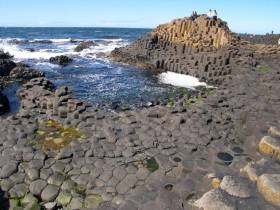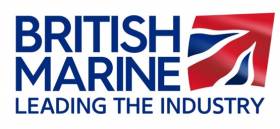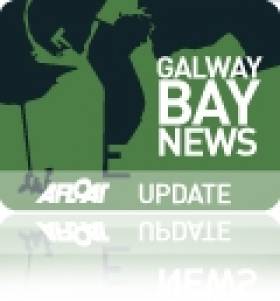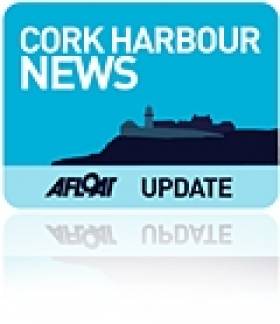Displaying items by tag: tourism
#Tourism - A number of waterside destinations feature in a new Lonely Planet list of the top 21 things to do in Ireland - just in time for the St Patrick's Festival.
TheJournal.ie has the lowdown on the tourism and travel guide's picks, which include the windswept coasts and breathtaking lakes of Connemara, the picturesque Dingle Peninsula, the 'unforgettable' Glendalough and the stunning sights around the Ring of Kerry.
And that's not to mention the rugged beauty of the Donegal coastline, the magnificence of the Causeway Coast and the remarkable history of Titanic Belfast.
Boating Named as one of the Most Popular Tourist Activities During English Tourism Week
According to a recent report from leading marine industry body British Marine, domestic holidays in England that incorporate boating or watersports are some of the most popular tourism experiences.
Over 75% of Great Britain’s boating tourism experiences take place in England and in 2014, over 4 million holidays involving an on the water activity were recorded, representing a 9% share of the total English tourism market.
The research, conducted in conjunction with VisitEngland, shows that in England, more domestic holidays involved an activity such as sailing, watersports, canal boating and sightseeing trips that included a passenger boat trip than activities such as visiting a museum or historic house or castle:
· 2,260,000 went on a sightseeing trip, including passenger boat trips, contributing £744m to the UK economy
· 1,011,000 took part in a manual watersport, such as kayaking, spending £315m
· 967,000 went on a canal boat trip, spending £336m
· 391,000 went sailing, spending over £123m
· 110,000 took part in a motorised watersport, such as jet-skiing, spending £33m
This market is driven by the boating haven of the South West, which hosts over a third of all English boating tourism holidays, with canal boating in the Midlands, sailing on the Suffolk coast and sightseeing boat trips on the Thames all being named as popular boating tourism destinations and activities.
Alastair Wilson, Senior Researcher at British Marine commented: “It’s fantastic to see that the findings from the “Domestic Boating Tourism Market in Great Britain” report are so positive for boating tourism in England. We are continuing to see our members within the sector experience positive growth for their business. It is great to be able to celebrate these fantastic findings during VisitEngland’s English Tourism Week.”
Waterways Ireland Launches Latest 'Voyages & Visits' Guide
#InlandWaters - Waterways Ireland's latest tourism guide for Voyages and Visits was officially launched yesterday (Thursday 14 January) at Belfast's Holiday World Show.
The guide contains all the essential navigational and practical information required to help in planning a voyage or visit to the eight inland navigations on the island of Ireland under the remit of Waterways Ireland.
Voyages and Visits is free and available to order in print or download from the Waterways Ireland online shop HERE.
#StarWars - Tourism Ireland is hoping the success of the new Star Wars movie will attract fans in their droves to Skellig Michael and the Kerry coast, as TheJournal.ie reports.
And the tourism marketing board has launched a new video extolling the virtues of the UNESCO world heritage site, which will play a big role in Episode VIII of the Star Wars saga due in cinemas in May next year.
But not everyone will be happy with the growing interest in the vulnerable island habitat for many protected marine species, coming just weeks after Birdwatch Ireland said the most recent film shoot on the island was "not compliant" with the EU habitats directive.
Can Ireland Learn From Scotland's Plans For Marine Tourism Growth?
#Tourism - Ireland is lagging behind our Scottish neighbours when it comes to strategy for growing marine tourism.
That's according to Dun Laoghaire Marina, which today (Friday 20 November) tweeted on the impending announcement in Edinburgh of a five-year action plan to grow Scotland's marine tourism industry by £90 million (€128.7 million).
Connected with that are moves to boost sailing tourism by nearly 50% of its current £100 million value to the Scottish economy, as STV News reports.
"Providing authentic experiences, improving the customer journey and building industry capabilities" are the three themes identified in the Scottish plan to develop both infrastructure and facilities for coastal and waterway attractions, and events and initiatives highlighting the same.
While local strategies are being devised in Ireland, such as Galway City Council's recent six-year tourism blueprint to take advantage of the successful Wild Atlantic Way initiative, Dun Laoghaire Marina laments that there is nothing in this country comparable to Scotland's national plan, nor the Scottish Parliament's Cross-Party Group on Recreational Boating and Marine Tourism.
That's despite the focus on the marine sector and the 'blue economy' championed at this summer's second Ocean Wealth Conference.
What do you think? Does Ireland need a clearer roadmap towards making the most of our marine resources for tourism? Let us know in the comments below
Galway City Councillors Adopt New Six-Year Tourism Blueprint
#Tourism - Galway's status as the only city on the Wild Atlantic Way is at the centre of a new six-year tourism blueprint for the City of the Tribes.
As the Connacht Tribune reports, the Tourism Sustainability Strategy 2015-2021 – developed from search commissioned by Galway City and County Councils – recommends that a 'master brand' be created to capitalise on the city's unique position in the West of Ireland.
Plans include developing and marketing Galway as a transport and accommodation hub for the Wild Atlantic Way, as well as creating new spin-off cultural and heritage trails, and extending the tourist season with the likes of new city-based festivals.
The Connect Tribune has much more on the story HERE.
Travel YouTubers Make Waves Along Ireland's Wild Atlantic Way
#WildAtlanticWay - Popular travel YouTube duo the Vagabrothers have been posting clips from their current trip along Ireland's Wild Atlantic Way - including a "super relaxing" kayaking adventure off West Cork.
As TheCork.ie reports, Californian brothers and self-professed vagabonds Marko and Alex Ayling paddled in the company of Atlantic Sea Kayaking's Jim and Maria Kennedy as part of their extensive tour of the country at the invitation of Tourism Ireland.
Once back on shore, the Aylings were treated to a surprising seaweed lunch at the Union Hall café run by the Kennedy's own daughter.
The video above is just one of a series that's taken the brothers surfing in Strandhill, cliff-jumping in the Aran Islands and tucking into an oyster feast in Co Galway.
And it comes as Lonely Planet recommends the Wild Atlantic Way as the world's best offbeat coastal road trip, according to Galway Bay FM.
The whole of the Vagabrothers' Irish adventure so far can be found on YouTube HERE.
Galway Bay 'Mackerel Festival' Proposed For Salthill Promenade
#GalwayBay - A new mackerel-themed maritime festival has been proposed for Galway Bay this autumn – as the latest industry figures show tourism in the region is heavily concentrated in the summer months.
The Connacht Tribune reports on the 'Mackerel Festival' idea suggested at a Galway Chamber meeting last week as a way to rejuvenate Salthill.
Along the lines of the recent Dublin Bay Prawn Festival, the event would liven up the seaside suburb's renowned Promenade with a celebration of its local mackerel catch, which brings in big numbers each September.
The event was one of a number of ideas, including reopening Salthill's tourist office, put forward at the meeting last Tuesday (21 April) that agreed to form a committee to advance the most promising plans.
And the news comes as the latest figures from Fáilte Ireland show that a third of all visitors to Galway in 2014 were 'shoehorned' into the two high summer months.
According to the Connacht Tribune, a combined total of 33% of Galway visitors arrived in July and August last year.
June and September are the next busiest months with 24% of all visits between them, as opposed to just 3% in January – underlining the highly seasonal nature of the region's tourism industry.
The figures were released as part of a public consultation on the Wild Atlantic Way and the initiative's effects on the coastal environment.
Spike Island Interpretive Centre Could Be Ready By Next Summer
#CorkHarbour - Five years after Spike Island was first opened as a tourist attraction, plans are in the making for a new interpretive centre on the site that could be ready by next summer.
As the Irish Examiner reports, the €2.5 million Fáilte Ireland-funded project for the former prison island in Cork Harbour could see ground broken as soon as September ahead of ribbon cutting in time for the 2016 summer tourism season.
According to county engineer David Keane, Block B of the old prison building will be refurbished for the visitor centre, which will house an exhibition on the history of the island as well as military memorabilia.
It's hoped that the plans will attract up to 300,000 visitors to Cork Harbour annually, and create some 190 jobs.
The Irish Examiner has much more on the story HERE.
Coastal Attractions Big Winners At Responsible Tourism Awards
#Tourism - Coastal attractions made up the bulk of the winners at Wednesday night's Irish Responsible Tourism Awards, as Business & Leadership reports.
And Jim Kennedy's Atlantic Sea Kayaking – which took the gold medal for Best Adventure Activity Provider for Responsible Tourism – also took the overall award at the inaugural ceremony hosted at Dublin's Radisson Blu Royal Hotel.
Elsewhere, golds went to the Co Clare's Loop Head Peninsula in Co Clare (for Best Destination for Responsible Tourism) and Dolphin Watch (for Best in a Marine or Coastal Environment).
Completing the trifecta for the Banner County, the Hotel Doolin won gold in the Best Small Hotel or Accommodation for Responsible Tourism category.
Meanwhile, Connemara Wild Escapes - which promotes various activities from walking to angling – was named Best Tour Operator for Responsible Tourism.
Business & Leadership has more on the story HERE.

































































